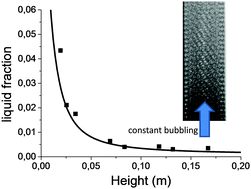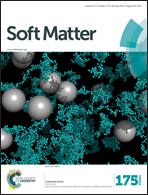Drainage in a rising foam
Abstract
Rising foams created by continuously blowing gas into a surfactant solution are widely used in many technical processes, such as flotation. The prediction of the liquid fraction profile in such flowing foams is of particular importance since this parameter controls the stability and the rheology of the final product. Using drift flux analysis and recently developed semi-empirical expressions for foam permeability and osmotic pressure, we build a model predicting the liquid fraction profile as a function of height. The theoretical profiles are very different if the interfaces are considered as mobile or rigid, but all of our experimental profiles are described by the model with mobile interfaces. Even the systems with dodecanol are well known to behave as rigid in forced drainage experiments. This is because in rising foams the liquid fraction profile is fixed by the flux at the bottom of the foam. Here the foam is wet with higher permeability and the interfaces are not in equilibrium. These results demonstrate once again that it is not only the surfactant system that controls the mobility of the interface, but also the hydrodynamic problem under consideration. For example liquid flow through the foam during generation or in forced drainage is intrinsically different.


 Please wait while we load your content...
Please wait while we load your content...